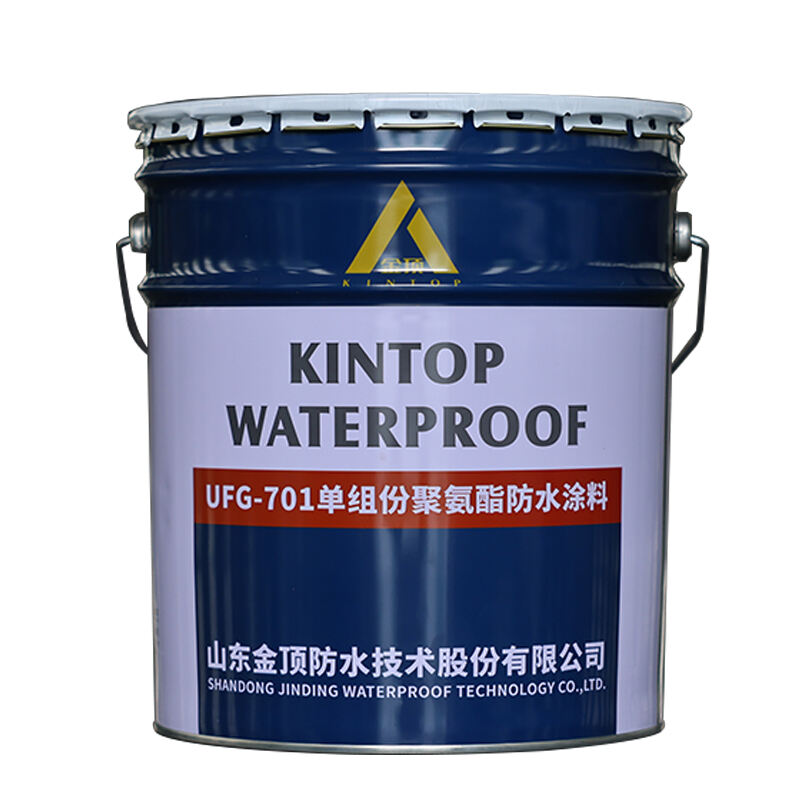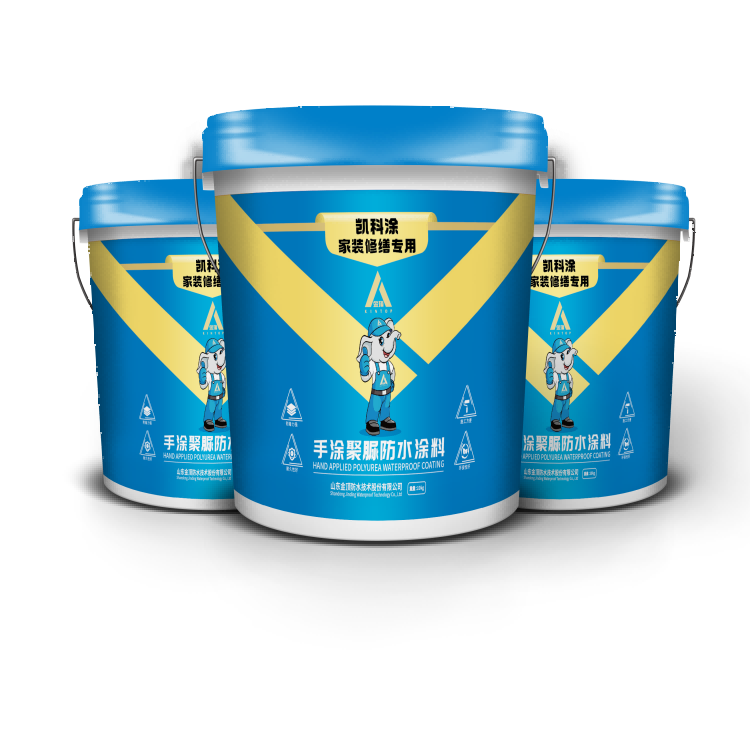The Role of Temperature in Waterproof Coating Adhesion and Curing
How Temperature Affects Coating Adhesion in High-Heat Environments
Waterproofing media can exhibit a significant change in their adhesion performance at high temperatures, especially if such temperatures exceed 35 0 C. This is a particularly important issue when subjected to such conditions, the rapid solvents evaporation proving to be detrimental to proper adhesion of the coatings. More over, if a substrate is too hot on application, the coating will not bond properly, thereby causing premature failure. And to eliminate these risks, there must be optimal temperatures at the application and curing to have good adhesion waterproof coating, as well eliminate these risks, have to have a good cure.
Cold Weather Risks: Delayed Curing and Bonding Failures
However, low temperatures also create their own obstacles for appropriate coating of waterproof coatings thereon. Below the minimum recommended fabricator application temperature, which is typically around less than 10°C, cure times are excessively prolonged resulting in products that are even longer susceptible to environmental factors. The possibility of bonding failures is enhanced in such environment, emphasizing the necessity of complete surface preparation in the cold regions. We can get better adhesion and service life with high quality of the coating and lower temperature if the surface is well prepared.
Effects of Extreme Cold on Waterproof Coating Application
Solvent Evaporation Challenges in Low Temperatures
In very low temperature, the evaporation of solvent has been greatly reduced, which prevents the waterproof coatings from being dried. With deficient evaporation of the process, the covering is not carried out completely and this can lead to sticking problems. The desired chemical reactions required to cure a may not react sufficiently to create a sufficient bond between the coating and the substrate. To counter these issues, it is essential to choose waterproofing coatings meant for cold weather use. This Means a Stronger and Longer Lasting Coating That Will Holdup in the Harshest Climates.
Critical Surface Moisture Checks for Cold-Weather Application
Meticulous surface moisture checks are essential when applying watertight coats during cold conditions. Even the slightest frost or dew can have drastic effects on the adhesion of the coating since the bonding is severely compromised by a negligible layer of moisture. Moisture meters may assist in determining if the substrate is dry enough for the application. It is shown that the performance and reliability of waterproof coatings at low temperature can be remarkably improved by decreasing the possibility of moisture damage.
Adjusting Substrate Temperature for Optimal Bonding
The correct substrate temperature adjustment is a crucial step to ensure good adhesion during the process of cold weather application of waterproof filings. The moisture problems can also be mitigated and the bond strength enhanced by preheating the substrate to be coated. This can be done with infrared heaters or electric blankets for controlled heating. subtrate if possible would be above 10°C to meet the requirement of coating. In this way, we can not only improve the adhesion but also remain long-term and effective paint even in extremely cold situation.
High-Temperature Challenges in Waterproof Layer Bonding
Rapid Drying and Adhesion Loss in Hot Conditions
Waterproof coating construction is a tough task in summer, because of high temperature, drying fast, adhesion reduction. The coating may not adhere well to the substrate when it is applied in hot conditions, therefore, the waterproof layer may not be reliable and durable. The sufficient surface preparation is therefore required in order to avoid adhesion decrease under hot coating conditions. Techniques such as wiping clean and priming make the surface better for bonding. And when you play with retarders you slow the drying time, allowing the paint to really get a good grip.

Timing Applications to Avoid Peak Heat and UV Exposure
Ultimately, timing is everything when it comes to applying waterproof coatings in hot weather in order to miss the peak heat and UV rays you'd otherwise have to endure. Scheduling the application for cooler parts of the day, such as early mornings or late afternoons, can greatly improve the results and the longevity of the job. “UV builds heat, so in addition to building heat on the roof, account for it because if you get the roof too hot, it will soften the materials so that it doesn't hold up as well,” he said.=\"/glossary/definitions/513\" class=\"glossary-link\"UV exposure increases heat, but it also breaks down some of the chemicals in waterproof coatings, which means timing is also important to ensure a long-lasting application, said Engle. In addition, UV-resistant finishes will help protect against sun damage, preserving it in all types of weather.
Ideal Application Conditions for Maximum Coating Durability
Temperature Sweet Spot: 10°C–30°C for Waterproof Coating
Under-film application of waterproof coatings between 10°C and 30°C will afford best adhesion and best performance. This temperature spread taking its place is sufficient to maintain the cure process on track, and not one that is affected by outside temperature changes. Following this span will ensure the longest lifetime of the coating since the manufacturers usually advise these conditions. The temperature itself is also stabilized, enhancing the bonding of the ingredients of the coating and offering strong protection against environmental insults.
Surface Temperature Measurement Best Practices
Precise surface temperature detection is a must for the correct type of coating application. We need to be able to take exact temperatures, using these candy thermometers; Surface temperature must be in specified range for honey. This is so that the coating can adhere well and be well-cured. It is important to monitor and maintain the application environment on a routine basis to ensure that temperature-related problems do not reduce the durability of the coating. Following these guidelines will ensure that we protect and extend the life of the coating.
Weather Monitoring Strategies for Long-Lasting Protection
Pre-Application Environmental Checks
"The step of performing comprehensive environmental inspections prior to the application of waterproof coatings is paramount to detect the specific weather-related conditions that may interfere with the operation." Using technology like weather maps and onsite weather monitors shows teams real-time information about weather patterns that could impact quality of application. For example, streaming weather data from local points will enable crews to time their coating work for the best weather and avoid exposure to weather that may interfere with the adhesion or drying of the coated layer.
Dew Point and Humidity: Hidden Threats to Coating Integrity
The dewpoint and humidity are frequently underappreciated enemies that will have a huge impact on an investment in waterproofing. High humidity (especially when temperatures are close to the dew point) interferes with adhesion of the coating and increases drying times. It is therefore essential to know the dew point as a coating applied at, or below, this temperature may fail to adhere properly and may not function as intended. Hygrometers allow teams to measure the moisture content of the air so coatings can be applied under the circumstances that allow for proper adhesion and life of the coating. This consideration certainly assists in determining the best time of the year to apply, ensuring that the coating retains its protective characteristics.
FAQs
What is the ideal temperature range for applying waterproof coatings?
The ideal temperature range for applying waterproof coatings is between 10°C and 30°C. This range ensures effective adhesion and curing of the coating.
How do high temperatures affect waterproof coating adhesion?
High temperatures, particularly those exceeding 35°C, can lead to rapid solvent evaporation, which undermines the coating's ability to adhere properly, causing premature failures.
Why is surface moisture check important in cold-weather applications?
Checking for moisture, such as frost or dew, is crucial, as it can severely affect adhesion. Moisture meters help ensure the substrate is dry before applying the coating.
How can UV exposure affect waterproof coatings?
UV exposure can intensify heat and degrade components in the coatings, affecting their longevity. Timing application to avoid peak UV exposure helps maintain coating integrity.
Table of Contents
- The Role of Temperature in Waterproof Coating Adhesion and Curing
- Effects of Extreme Cold on Waterproof Coating Application
- High-Temperature Challenges in Waterproof Layer Bonding
- Ideal Application Conditions for Maximum Coating Durability
- Weather Monitoring Strategies for Long-Lasting Protection
- FAQs

